A friend is repairing/remodeling a rental. It is a stucco sided house with the stucco all the way to ground. There is significant rot in the sills and floor joists which he is addressing. There is a lot of mildew on the inside lower third of the back exterior wall. He has stripped the rock off. He wants a way to stop the moisture from penetrating the stucco and coming into the interior wall cavity before he insulates. The felt between the stucco and the interior seems to be intact. There is some moisture on the felt sometimes but it looks like it may be condensation from the cold outside hitting the heated inside like the old aluminum windows are doing. I suggested he dry out the foundation and install a vapor barrier first then…what’s next? (He is replacing all the windows with Milgard- Vinyl)
Thanks for your help,
Paul
Discussion Forum
Discussion Forum
Up Next
Video Shorts
Featured Story

Learn how to plan, fabricate, and install a chute to conveniently send your dirty clothes from an upstairs bathroom or hallway to your laundry room below.
Featured Video
How to Install Cable Rail Around Wood-Post CornersHighlights
"I have learned so much thanks to the searchable articles on the FHB website. I can confidently say that I expect to be a life-long subscriber." - M.K.
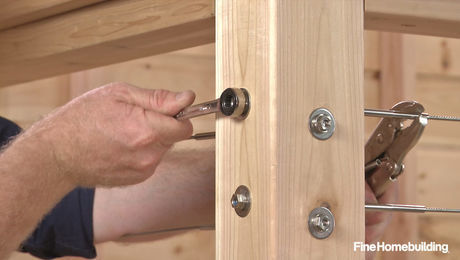
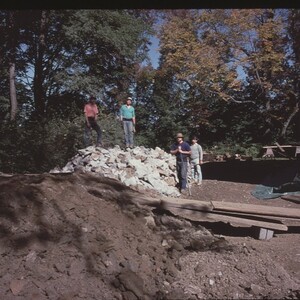

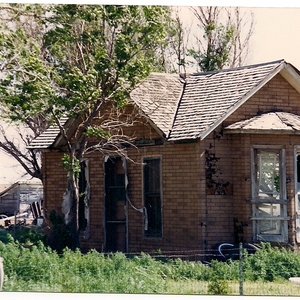







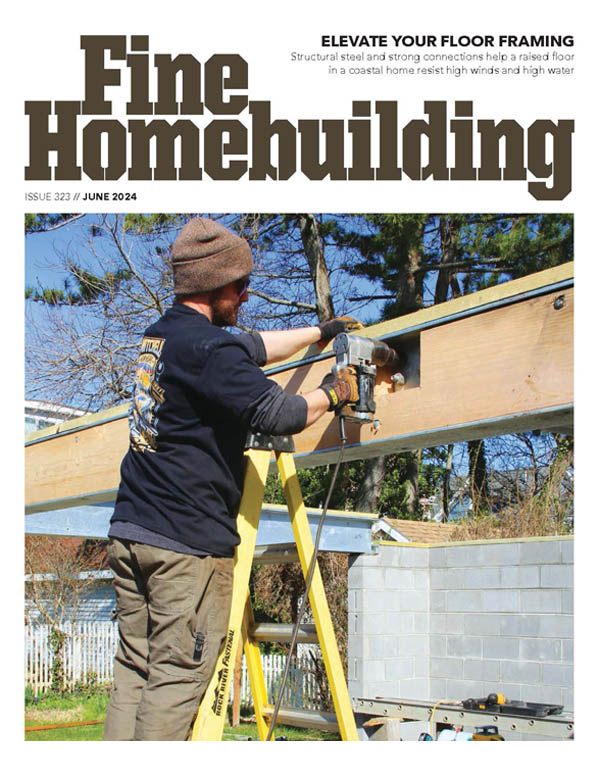

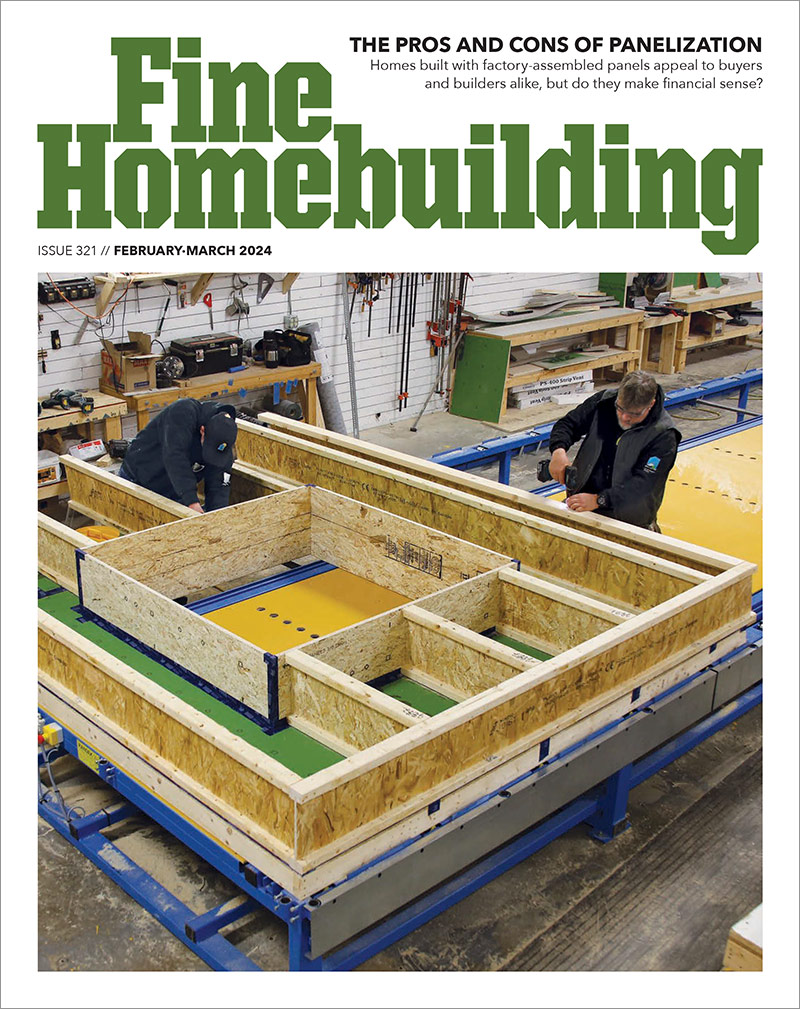



Replies
Bump?
I'm not a stucco guy, but I bought a stucco house ('76 model) up here in WA state, so I'm learning "on the job."
Conventional 3-coat stucco is not waterproof - it's water resistant. The idea is that (when it rains) water slowly soaks through the stucco until it hits the airspace on the backside of the lath. Water should then travel down the air space and exit the weep edge at the bottom of the wall. Waterproofing membrane (felt in the old days) keeps the moisture off the framing until this drying process is complete.
I would check to make sure that the weep edge vent at the bottom of the wall isn't plugged up - i.e. in contact with the soil. If this back exterior wall is associated with a bathroom, kitchen or utility room, then he might be able to solve the problem from the inside. But if it's just something like a bedroom, then there's probably a problem with moisture infiltration from the outside. I'd evaluate the roof flashing, etc.. to identify any obvious problems. If the damage is all below windows, then it's a problem with the flashing and he's going to need to rip off some stucco to repair it properly.
There was a good article in jlc a few years ago on replacing windows on stucco homes - well worth the time spent reading.
He should really get a good stucco outfit (find one that does remediations) to take a look. Improper window replacement in stucco houses sometimes leads to near immediate leaking/rotting/mold problems - litigation city.
Webted I missed your post a moment ago. This stucco is on chicken wire, not lath. There is no space between the back of the stucco and the felt paper. The installer used wire every 6 inches up the outside of the studs (16 oc) to give support to the felt and then tacked up chicken wire then stuccoed away. I understand what you are saying about the air space-we call it a rain wall when using hardi or wood siding.
Paul
Hi Paul:Sorry, I wasn't clear. Many of the stucco guys refer to the chicken wire as lath. And air space probably overstates it a bit - I wasn't referring to an actual furred-out rain wall, just to the slight gap from the lack of adherance between the stucco and the tarpaper. Nonetheless, water will work its way down this. Nowadays, they use different grades of moisture barrier rated by the time it takes moisture to penetrate (60 minute, 90 minute, 120 minute, etc...) through to the framing or sheathing rather than tarpaper, but it's pretty much the same idea. Up here in WA state, soil piled up against the bottom of the stucco wall IS a problem, but we're wet about 11 months out of 12. It still seems likely that the problem is in the flashing schedule, particularly if the rotten area is under windows, but unvented moisture inside the structure is a no-brainer for fixing, anyways. I didn't realize that your guy was cutting in from the outside of the wall - I thought he was diagnosing all of this from the inside. For repair work, most of the guys I've talked to try to maintain the lath (chicken wire) and are VERY careful not to cut into the moisture barrier. Usually you bash the old stucco out with a hammer or a pneumatic chisel (no sawcuts - the joint between new and old needs to be irregular, or "keyed"). They wire new lath into the old, tack it in and lay down the scratch coat.I'd think real hard before trying to seal stucco from the outside face with paint, people have caused some real mold problems this way. If a water makes it inside (via the crawl space, unvented bathroom, leaky faucet, crack in the exterior wall, etc...) , and the outside face of the stucco is sealed, where does the water go? LaHabra (and other companies) make a colorant called fog coat that is designed to go over stucco and maintain permeability.
The JLC article I was talking about is from 2004 and was written by a guy named Don Thorvund. -t
Webted, you got it right-he stripped all the drywall cause it was black, soft and rotten. And he wanted to insulate too. We can see the wire supporting the felt from inside and the outside corner of the stucco that is broken off is where I see the chicken wire inside the stucco. I can not see any sign of moisture penetrating the siding around the windows. He plans on replacing the glass part of the metal windows with the milgard stucco replacement window. It has a 1 3/4" flange that allows for leaving the frames intact. The foundation is as you describe, perimeter wall with crawl space. There are vents-but the space has been wet for years. The renters did him no favors by keeping quit about the plumbing problems.
We are in NoCa and get about 50" rain in the winter with heavy fog the rest of the year.
Paul
The problem is in your second sentence. Stuccco should not go all the way to the ground, at least not without a water table or some similar break near the top edge of the foundation.
Dan there is a broken corner that clearly shows some sill, rim and joist rot. He is going to cut the stucco up as high away from the ground as he can and still leave an inch of stucco on the perimeter foundation wall....I did not know that stucco had a 'shelf life'. There are surface cracks in the exterior but the paper does appear to be intact from the inside.
Thanks for the info about the 'elastic' spray, we are way up in No CA but stucco was popular around here 50 years ago.
PaUL
One thing to keep in mind is that stucco doesn't last forever. It has a definate life span. I've seen in So California (where there is a lot of stucco) companies that spray a thick elastic coating over the stucco to try and extend it's life span. It starts to get a lot of cracks in it and the tar paper can start to fail. The thick elastic coating spans the cracks and keeps water out. I'm not saying it will replace good drainage or other good fixes but it is one option.
I'm currently living in a similar home in Los Angeles, one whose history I'm very familiar with.
You mention rotting sills and floor joists so that means the house is on a raised foundation with a crawl space, right?
The crawl space should be well vented, on all sides. That may be part of the reason for the rot. Could be all of the reason.
If someone did a room addition without foundation vents or closed off the vent openings in the origninal foundation it probably caused the rot.
Could also have been an old leak of some kind, something that escaped notice for a while, then was fixed without checking for other damage.
There's no reason why the stucco shouldn't cover the exterior framed wall down over the foundation and into the ground. That's standard practice and has no effect on water penetration.
The original felt may be old but if it's in tact it should be enough of a barrier to keep the usual condensation from getting into the framework.
My advice is to do a careful inspection of the wall, checking for proper venting and possible leaks, then keep the stucco dry with some quality paint made for that purpose.
What's the climate there? I'm guessing it's different from LA. In dry country you don't have to worry about masonry wicking moisture out of the soil, but you do in more "average" conditions.
Dan, the soil touching the stucco on this home has been continuously moist to wet for over fifty-five years, as is the case with most SoCal stucco homes which have landscaping and sprinkler systems.
While I believe that wicking is possible with stucco which is under the soil, it just doesn't continue to wick above grade to any noticeable degree.
Got to look elsewhere for the problem.
There's a difference between soil conditions in SoCal vs elsewhere. Around here stucco like that would have the sill rotted in 30 years easy.
If your view never changes you're following the wrong leader
First it was moisture content, now it's "soil conditions".
You're blowing smoke Dan but if you said you never inhaled, I'd be skeptical of that too. ;-)